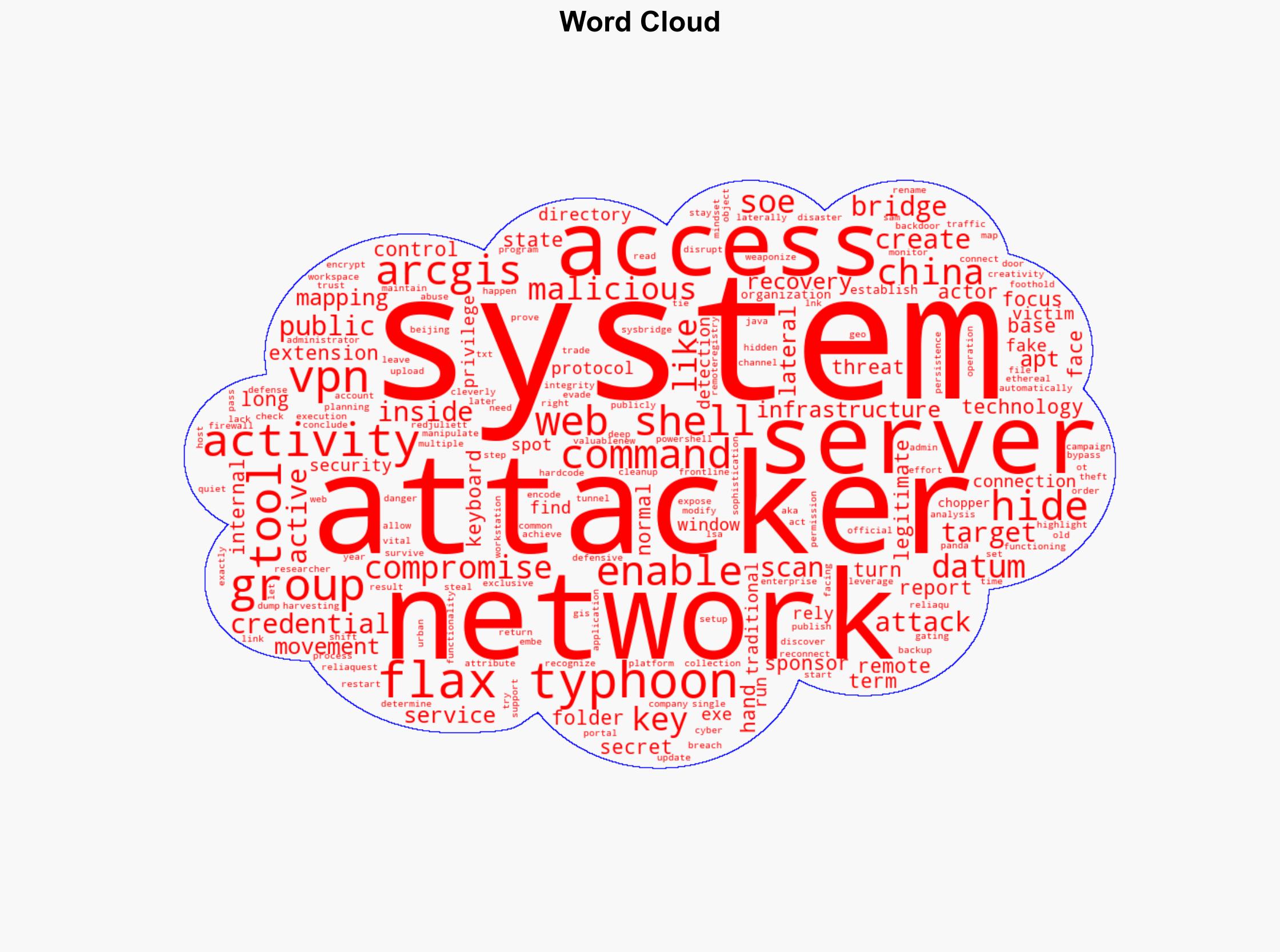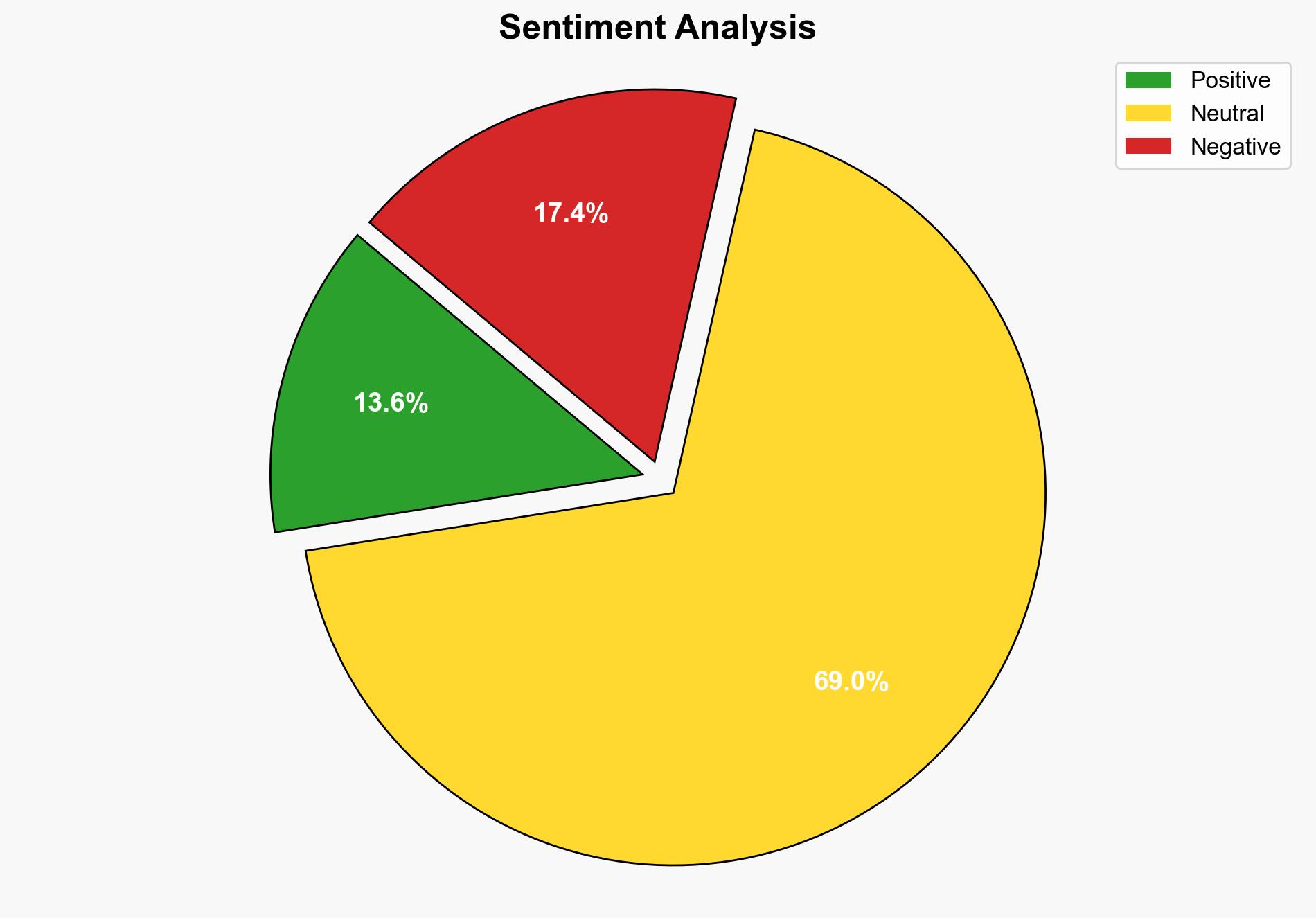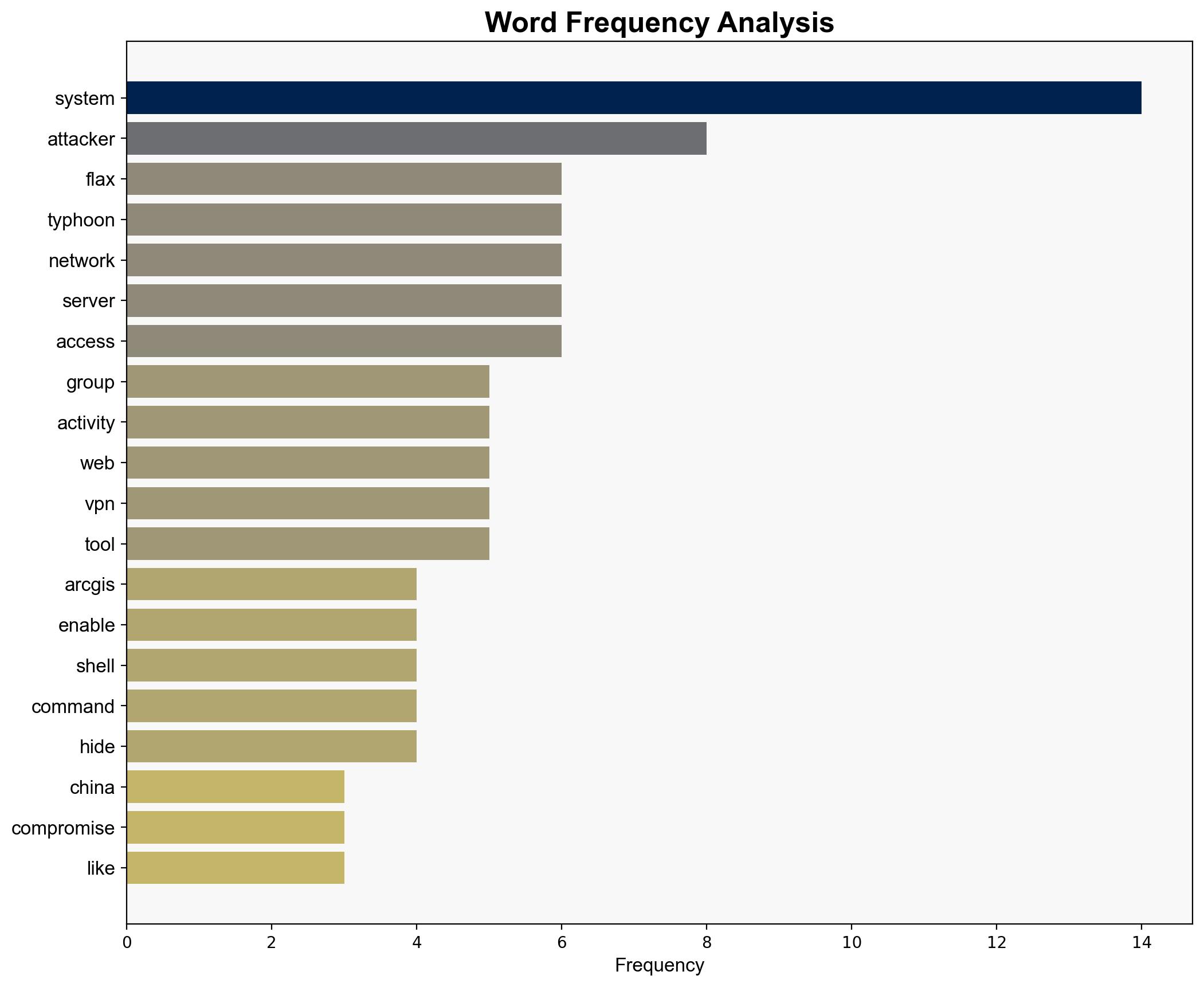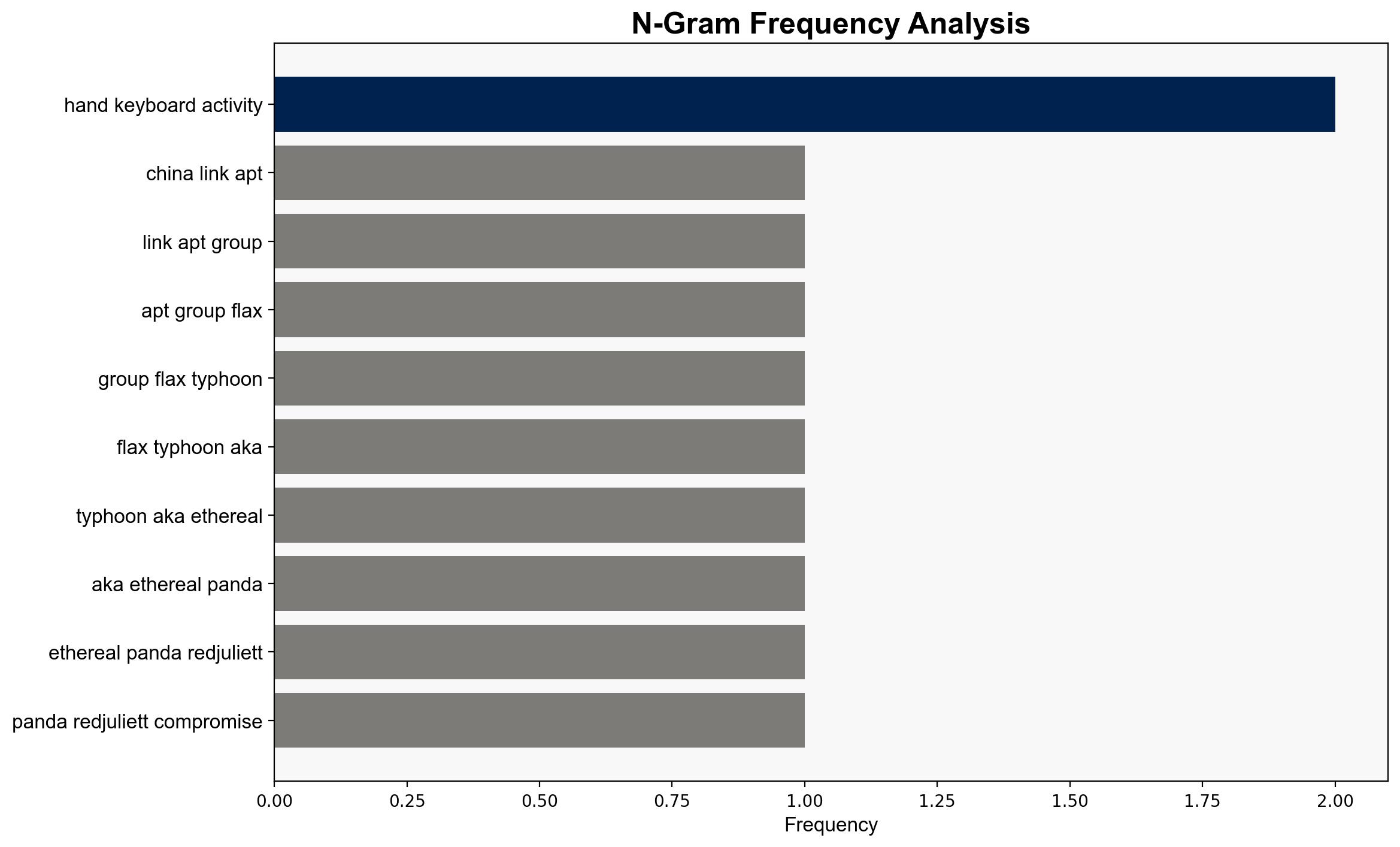Flax Typhoon APT exploited ArcGIS server for over a year as a backdoor – Securityaffairs.com
Published on: 2025-10-15
Intelligence Report: Flax Typhoon APT exploited ArcGIS server for over a year as a backdoor – Securityaffairs.com
1. BLUF (Bottom Line Up Front)
The Flax Typhoon APT group, likely linked to China, has exploited ArcGIS servers for over a year, utilizing them as backdoors to gain persistent access to various networks. The most supported hypothesis is that this operation is state-sponsored, aimed at strategic intelligence gathering and potential disruption of critical infrastructure. Confidence level is moderate due to the sophistication of the attack and the geopolitical context. Recommended action includes enhancing monitoring of GIS platforms and implementing advanced threat detection measures.
2. Competing Hypotheses
Hypothesis 1: Flax Typhoon is a state-sponsored group targeting critical infrastructure for intelligence gathering and potential disruption, leveraging ArcGIS servers as a strategic entry point.
Hypothesis 2: Flax Typhoon operates as an independent cybercriminal group focused on financial gain, exploiting ArcGIS servers to sell access to other malicious actors.
Using ACH 2.0, Hypothesis 1 is better supported by the evidence of sophisticated techniques and the focus on government and critical sectors, which align with state-sponsored objectives. Hypothesis 2 lacks support due to the absence of financial exploitation indicators.
3. Key Assumptions and Red Flags
Assumptions include the attribution of Flax Typhoon to state-sponsored activities based on their targets and methods. A red flag is the lack of direct evidence linking the group to a specific state entity. Another is the potential underestimation of the group’s capabilities due to the focus on ArcGIS servers, which may obscure broader operational goals.
4. Implications and Strategic Risks
The exploitation of ArcGIS servers indicates a shift towards targeting less monitored systems, posing a significant risk to national security and critical infrastructure. This could lead to cascading effects such as data breaches, operational disruptions, and geopolitical tensions. The use of legitimate tools for malicious purposes highlights the need for improved detection capabilities.
5. Recommendations and Outlook
- Enhance monitoring and security measures for GIS platforms and other overlooked systems.
- Develop and deploy advanced threat detection tools to identify and mitigate live-off-the-land techniques.
- Scenario-based projections:
- Best Case: Improved detection and response capabilities prevent further exploitation.
- Worst Case: Continued exploitation leads to significant disruptions in critical infrastructure.
- Most Likely: Ongoing attempts at exploitation with intermittent success, requiring sustained vigilance.
6. Key Individuals and Entities
No specific individuals are named in the intelligence. The group is associated with the Integrity Technology Group, a Beijing-based company.
7. Thematic Tags
national security threats, cybersecurity, counter-terrorism, regional focus





